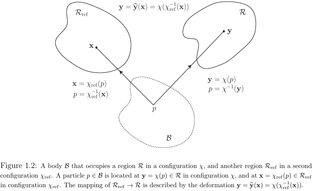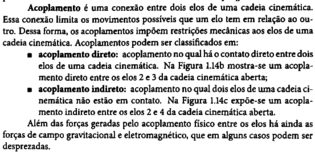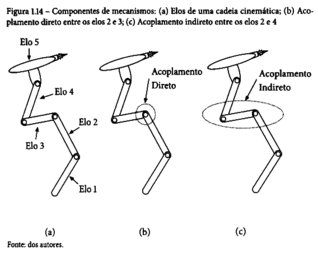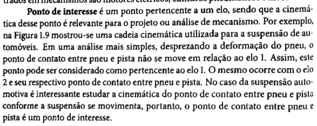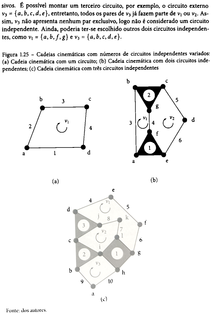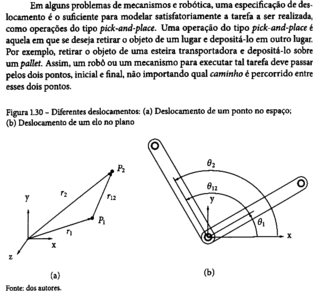Edited, memorised or added to reading queue
on 05-Jan-2021 (Tue)
Do you want BuboFlash to help you learning these things? Click here to log in or create user.
| status | not read | reprioritisations | ||
|---|---|---|---|---|
| last reprioritisation on | suggested re-reading day | |||
| started reading on | finished reading on |
Flashcard 4968281672972
| status | not learned | measured difficulty | 37% [default] | last interval [days] | |||
|---|---|---|---|---|---|---|---|
| repetition number in this series | 0 | memorised on | scheduled repetition | ||||
| scheduled repetition interval | last repetition or drill |
Parent (intermediate) annotation
Open itIn unsupervised learning, the dataset is a collection of unlabeled examples \(\{\mathbf x_i\}^N_{i=1}\). Again, \(\mathbf x\) is a feature vector, and the goal of an unsupervised learning algorithm is to create a model that takes a feature vector \(\mathbf x\) as input and either transfor
Original toplevel document (pdf)
cannot see any pdfsFlashcard 5525591690508
| status | not learned | measured difficulty | 37% [default] | last interval [days] | |||
|---|---|---|---|---|---|---|---|
| repetition number in this series | 0 | memorised on | scheduled repetition | ||||
| scheduled repetition interval | last repetition or drill |
Flashcard 6178543635724
| status | not learned | measured difficulty | 37% [default] | last interval [days] | |||
|---|---|---|---|---|---|---|---|
| repetition number in this series | 0 | memorised on | scheduled repetition | ||||
| scheduled repetition interval | last repetition or drill |
Flashcard 6178550451468
| status | not learned | measured difficulty | 37% [default] | last interval [days] | |||
|---|---|---|---|---|---|---|---|
| repetition number in this series | 0 | memorised on | scheduled repetition | ||||
| scheduled repetition interval | last repetition or drill |
Flashcard 6178557267212
| status | not learned | measured difficulty | 37% [default] | last interval [days] | |||
|---|---|---|---|---|---|---|---|
| repetition number in this series | 0 | memorised on | scheduled repetition | ||||
| scheduled repetition interval | last repetition or drill |
Flashcard 6180536454412
| status | not learned | measured difficulty | 37% [default] | last interval [days] | |||
|---|---|---|---|---|---|---|---|
| repetition number in this series | 0 | memorised on | scheduled repetition | ||||
| scheduled repetition interval | last repetition or drill |
Flashcard 6180568173836
| status | not learned | measured difficulty | 37% [default] | last interval [days] | |||
|---|---|---|---|---|---|---|---|
| repetition number in this series | 0 | memorised on | scheduled repetition | ||||
| scheduled repetition interval | last repetition or drill |
Flashcard 6180571581708
| status | not learned | measured difficulty | 37% [default] | last interval [days] | |||
|---|---|---|---|---|---|---|---|
| repetition number in this series | 0 | memorised on | scheduled repetition | ||||
| scheduled repetition interval | last repetition or drill |
Flashcard 6180582329612
| status | not learned | measured difficulty | 37% [default] | last interval [days] | |||
|---|---|---|---|---|---|---|---|
| repetition number in this series | 0 | memorised on | scheduled repetition | ||||
| scheduled repetition interval | last repetition or drill |
Flashcard 6180587310348
| status | not learned | measured difficulty | 37% [default] | last interval [days] | |||
|---|---|---|---|---|---|---|---|
| repetition number in this series | 0 | memorised on | scheduled repetition | ||||
| scheduled repetition interval | last repetition or drill |
Flashcard 6180602514700
| status | not learned | measured difficulty | 37% [default] | last interval [days] | |||
|---|---|---|---|---|---|---|---|
| repetition number in this series | 0 | memorised on | scheduled repetition | ||||
| scheduled repetition interval | last repetition or drill |
Flashcard 6180605922572
| status | not learned | measured difficulty | 37% [default] | last interval [days] | |||
|---|---|---|---|---|---|---|---|
| repetition number in this series | 0 | memorised on | scheduled repetition | ||||
| scheduled repetition interval | last repetition or drill |
Flashcard 6180609330444
| status | not learned | measured difficulty | 37% [default] | last interval [days] | |||
|---|---|---|---|---|---|---|---|
| repetition number in this series | 0 | memorised on | scheduled repetition | ||||
| scheduled repetition interval | last repetition or drill |
Flashcard 6180612738316
| status | not learned | measured difficulty | 37% [default] | last interval [days] | |||
|---|---|---|---|---|---|---|---|
| repetition number in this series | 0 | memorised on | scheduled repetition | ||||
| scheduled repetition interval | last repetition or drill |
Flashcard 6180620078348
| status | not learned | measured difficulty | 37% [default] | last interval [days] | |||
|---|---|---|---|---|---|---|---|
| repetition number in this series | 0 | memorised on | scheduled repetition | ||||
| scheduled repetition interval | last repetition or drill |
Flashcard 6180635806988
| status | not learned | measured difficulty | 37% [default] | last interval [days] | |||
|---|---|---|---|---|---|---|---|
| repetition number in this series | 0 | memorised on | scheduled repetition | ||||
| scheduled repetition interval | last repetition or drill |
Flashcard 6194683841804
| status | not learned | measured difficulty | 37% [default] | last interval [days] | |||
|---|---|---|---|---|---|---|---|
| repetition number in this series | 0 | memorised on | scheduled repetition | ||||
| scheduled repetition interval | last repetition or drill |
Espaço amostral – Wikipédia, a enciclopédia livre
abilidade condicional Independência Independência condicional Lei da probabilidade total Lei dos grandes números Teorema de Bayes Desigualdade de Boole Diagrama de Venn Diagrama de árvore v d e <span>Em teoria das probabilidades, o espaço amostral ou espaço amostral universal, geralmente denotado S, E, Ω ou U (de "universo"), de um experimento aleatório é o conjunto de todos os resultados possíveis do experimento. Por exemplo, se o experimento é lançar uma moeda e verificar a face voltada para cima, o espaço amostral é o conjunto { c a r a , c o r o a } {\displaystyle \{cara,coroa\}} . Para o lançamento de um dado de seis faces, o espaço amostral é { 1 , 2 , 3 , 4 , 5 , 6 } {\displaystyle \{1,2,3,4,5,6\}} . Qualquer subconjunto de um espaço amostral é comumente chamado um evento, enquanto subconjuntos de um espaço amostral contendo apenas um único elemento são chamados de eventos elementares ou eventos atômicos. Para alguns tipos de experimentos, podem existir dois ou mais espaços amostrais possíveis plausíveis. Por exemplo, quando retirado uma carta de um baralho de 52 cartas, uma possibilidad
abilidade condicional Independência Independência condicional Lei da probabilidade total Lei dos grandes números Teorema de Bayes Desigualdade de Boole Diagrama de Venn Diagrama de árvore v d e <span>Em teoria das probabilidades, o espaço amostral ou espaço amostral universal, geralmente denotado S, E, Ω ou U (de "universo"), de um experimento aleatório é o conjunto de todos os resultados possíveis do experimento. Por exemplo, se o experimento é lançar uma moeda e verificar a face voltada para cima, o espaço amostral é o conjunto { c a r a , c o r o a } {\displaystyle \{cara,coroa\}} . Para o lançamento de um dado de seis faces, o espaço amostral é { 1 , 2 , 3 , 4 , 5 , 6 } {\displaystyle \{1,2,3,4,5,6\}} . Qualquer subconjunto de um espaço amostral é comumente chamado um evento, enquanto subconjuntos de um espaço amostral contendo apenas um único elemento são chamados de eventos elementares ou eventos atômicos. Para alguns tipos de experimentos, podem existir dois ou mais espaços amostrais possíveis plausíveis. Por exemplo, quando retirado uma carta de um baralho de 52 cartas, uma possibilidad
